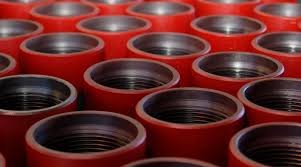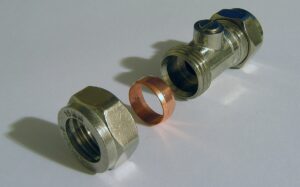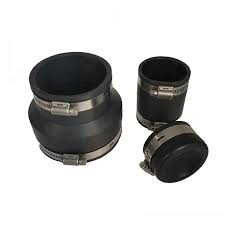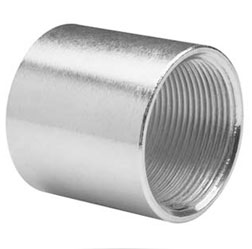- Get Free Quotes
- +91 99209 06048
- +91 22675 21290
- [email protected]
Types of Pipe Couplings: A Comprehensive Guide

Pipe couplings are essential components in piping systems, connecting pipes to ensure seamless fluid flow and prevent leaks. They come in various types, including compression, threaded, socket weld, butt weld, flange, and Victaulic couplings, each suited for specific applications. Factors to consider when choosing a coupling include pipe material, pressure and temperature ratings, corrosion resistance, ease of installation, and cost. By selecting the right coupling, you can ensure the reliability and longevity of your piping system.
Compression Pipe Couplings

Compression pipe couplings are a type of mechanical fitting used to connect two pipes of the same or different diameters. They are relatively easy to install and require no welding or special tools. The coupling consists of a body, a nut, and a compression ring. The pipe is inserted into the body, and the nut is tightened, compressing the ring against the pipe and creating a tight seal.
Compression couplings are commonly used in low-pressure applications, such as plumbing and irrigation systems. They are available in a variety of materials, including brass, copper, and stainless steel, to suit different applications and environmental conditions.
Benefits:
- Easy installation without welding or soldering.
- Leak-proof connection for water supply systems.
Flexible Pipe Couplings

Flexible pipe couplings are designed to connect two pipes, allowing for flexibility and movement between the two connections. They are typically made from rubber or other flexible materials, and they can accommodate misalignment, vibration, and thermal expansion and contraction.
Flexible couplings are commonly used in plumbing, HVAC, and industrial applications where rigid connections are not feasible or desirable. They can be used to connect pipes of different materials, such as metal and plastic, and can also be used to join pipes of different diameters.
Benefits:
- Absorbs shocks and movements.
- Perfect for PVC, cast iron, or steel pipes.
Threaded Pipe Couplings

Threaded pipe couplings are a common type of fitting used to connect two pipes with male threads. They are typically made of materials like brass, steel, or cast iron.
To connect two pipes, the threads on both ends are screwed together, creating a tight seal. Threaded couplings are versatile and can be used in various applications, including plumbing, HVAC, and industrial piping systems.
They are relatively easy to install and can be disassembled for maintenance or repair. However, it’s important to ensure proper thread engagement and the use of thread sealant to prevent leaks.
Benefits:
- Simple assembly and disassembly.
- Great for maintenance and repairs.
Flanged Pipe Couplings
Flanged pipe couplings are a versatile type of pipe fitting that uses flanges to connect two pipes. Each flange has a flat surface with bolt holes around the perimeter.
When two flanges are aligned and bolted together using a gasket, a leak-tight seal is created. Flanged couplings are commonly used in high-pressure and high-temperature applications, as well as in situations where frequent disassembly and maintenance are required. They are available in various materials, including cast iron, steel, and stainless steel, to suit different applications.
Benefits:
- Reliable for heavy-duty applications.
- Allows for easy pipe replacement or inspection.
High-Pressure Pipe Couplings
High-pressure pipe couplings are designed to withstand high pressure and temperature conditions.
These couplings are typically made of high-strength materials like stainless steel or alloy steel and are often reinforced with additional features like locking mechanisms or compression rings to ensure a secure and leak-proof connection.
High-pressure couplings are used in a variety of industries, including oil and gas, chemical processing, and power generation.
Benefits:
- Withstands high pressure and temperatures.
- Ensures durability and safety in critical applications.
Repair Couplings
Repair couplings are designed to repair damaged sections of pipe without the need for extensive cutting and welding. They are often used for emergency repairs or to fix minor leaks.
Repair couplings typically consist of a clamp that can be tightened around the damaged section of pipe, creating a seal and restoring the integrity of the pipeline. They are available in various materials and sizes to accommodate different pipe types and repair needs.
Benefits:
- Quick solution for leaks.
- Reduces downtime and costs.
Key Factors to Consider When Selecting a Coupling
- Material Compatibility: Ensure the coupling matches the pipe material, e.g., PVC, metal, or thermoplastics.
- Application Needs: Choose based on pressure, temperature, and fluid type.
- Size and Fit: Accurate measurements are crucial to avoid leaks.
Conclusion
Selecting the right type of pipe coupling ensures your piping system functions efficiently. From compression couplings in residential plumbing to high-pressure couplings for industrial pipelines, each type has unique features and benefits. Always consider the application, material compatibility, and pressure requirements to make the right choice.
For expert advice or to explore a range of quality pipe fittings, connect with a trusted pipes and fittings manufacturer today!










